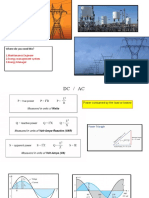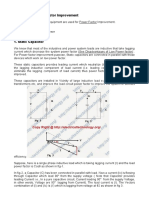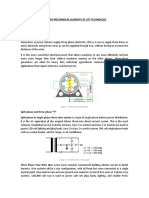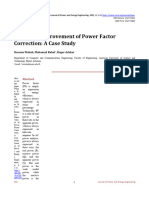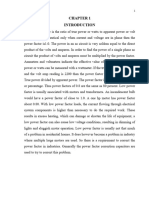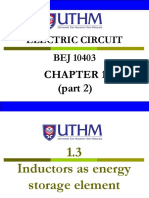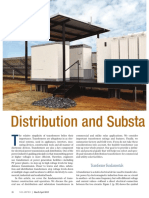0% found this document useful (0 votes)
98 views41 pagesAC Circuit Power Analysis
This document discusses power in AC circuits. It defines three types of power: true power, apparent power, and reactive power. True power is the actual work done, apparent power is the total power in the circuit, and reactive power is wasted power that does no useful work. The relationships between the three powers are illustrated using a power triangle with trigonometric formulas. Maintaining a high power factor is important to improve efficiency and reduce power losses. Reactive power can be corrected by adding capacitors or inductors to balance the circuit.
Uploaded by
Jhonn CanazaCopyright
© © All Rights Reserved
We take content rights seriously. If you suspect this is your content, claim it here.
Available Formats
Download as PDF, TXT or read online on Scribd
0% found this document useful (0 votes)
98 views41 pagesAC Circuit Power Analysis
This document discusses power in AC circuits. It defines three types of power: true power, apparent power, and reactive power. True power is the actual work done, apparent power is the total power in the circuit, and reactive power is wasted power that does no useful work. The relationships between the three powers are illustrated using a power triangle with trigonometric formulas. Maintaining a high power factor is important to improve efficiency and reduce power losses. Reactive power can be corrected by adding capacitors or inductors to balance the circuit.
Uploaded by
Jhonn CanazaCopyright
© © All Rights Reserved
We take content rights seriously. If you suspect this is your content, claim it here.
Available Formats
Download as PDF, TXT or read online on Scribd
/ 41











